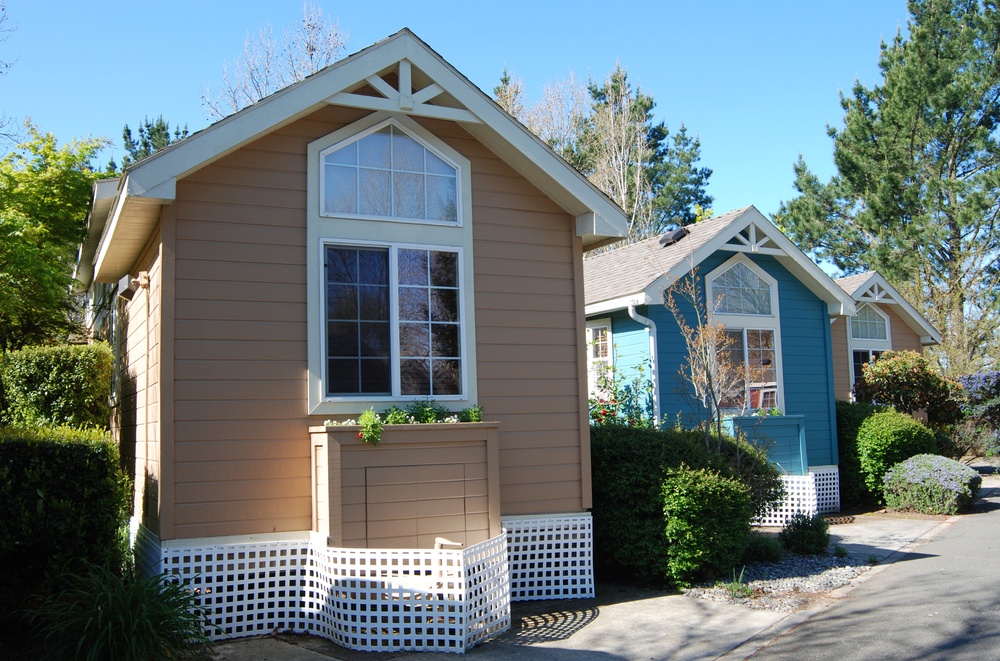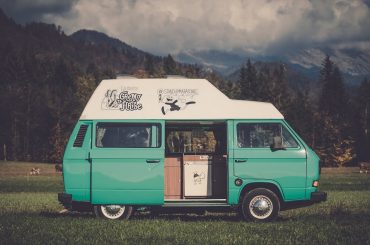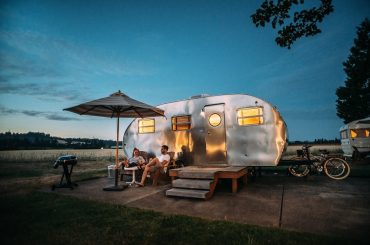Tiny houses and RVs (recreational vehicles) became popular modes of living in recent years as the cost of living in actual and traditional houses has inflated, making it difficult for young people in or just getting out of college to adapt. Tiny houses and RVs are the solutions many people are choosing for affordable living. With the added ability to earn money over the internet in this era, this has made mobile living a much more viable option. Other than the option of affordable living, people often choose tiny homes and RVs to be able to live comfortably without accumulating too much stuff as one would in a traditional home with infinite space. This also allows them to control life and live it their own way and on their own terms, not being dictated by consumerism.
What is a Tiny House?
Tiny homes are builds designed to maximize internal space. They have some mobility but stand out on the open road and are not counted as vehicles, as they cannot travel as much as an RV or camper would. Tiny homes are often built on a van or on the chassis of trailers to be towed, but not driven.
Tiny homes also are made to resemble traditional houses, just shrunken to what someone can afford and acclimate to. Tiny homes, just like their traditional counterparts are equipped to have plumbing, so that they have the usual necessities a traditional house can provide. There isn’t a rule or guideline for what constitutes or defines a tiny home, but in terms of size, they often stop at 500 sq ft.
What is an RV?
RVs are livable vehicles that come in various models and styles, sizes, and shapes. Some more expensive models come with luxury implements and interiors. Some even come equipped with toilets, showers, kitchens, and bathrooms, but these are things you can add yourself if it did not already. RVs eliminate housing costs during trips and travel as you would already have everything you need with you on the road. But living in a tiny house or an RV may not be the easiest thing.
Comparing the Qualities of Tiny Homes to Motor Home RVs and Travel Trailers
Mobility
Tiny houses are obviously going to be less mobile, since they are built to emulate real traditional homes, just shrunken to minimize the cost of living and construction. Though they can be lifted onto trailers’ backs, frequent travel on these trailers can gradually break or affect them since they aren’t made for consistent travel and aren’t aerodynamic. Their ability to be uprooted and physically moved does not necessarily constitute a travel-friendly home. This means less freedom practically for people who live a more nomadic life since tiny houses are made to be smaller versions of regular, traditionally built houses.
On the other hand, RVs are made for constant travel as they are, after all mainly vehicles, and mobile homes made for long haul and frequent driving. The traveling can also affect RVs overtime and cause some wear and tear as it is in essence, a vehicle, and wear and tear are something vehicles deal with. You have to be sure of your repair prowess since you wouldn’t want to break down in the middle of nowhere. You would need to know what you’re doing as you are essentially fixing your house. Some public parks in North America allow for longer-term parking, though, so owners who decide to stay put for the meanwhile can do so.
Ultimately in a direct comparison between an RV and a Tiny house, Tiny homes just don’t travel well, and you’ll find it much harder to do things like boondock in a parking lot for a few days if you’re dragging a large building on a trailer behind your truck because you stand out more. Any time you do something unusual and out of ordinary, people are going to pay attention to it. RVs by their nature call attention to themselves but they aren’t so uncommon people will spend a lot of time thinking about it. This is not the case with a Tiny Home, which can attract a crowd of spectators — and therefore, complaints.
You can live for weeks, even months, in a parking lot using a camper van but you’ll be lucky to spend even a single night living out of a Tiny House in such a location. So RVs are much better for boondocking than Tiny homes are.
Customization
Tiny homes are customized and outfitted to your own accord, unlike RVs that may already have been outfitted according to the manufacturer’s model specifications. Thanks to the established RV industry and trusted manufacturers, there is a lot of RV models to choose from.
Comfort
The main selling point of tiny homes are that they feel like a home. Now, this is debatable if you can make an RV feel like a home, but tiny houses are made to look like traditional houses. With RVs, you know they’re vehicles. The comfort factor of each are of course dependent on you, but if you’re looking for the space a tiny home can’t give you, some RVs are a lot more spacious and use high-end materials for the interior. However, both RVs and tiny homes can have the option to be outfitted with expandable components and furniture that serve dual purposes in the limited space.
Tiny houses also have better insulation and temperature control, unlike RVs where cooking can affect internal temperature along with other factors such as weather. They aren’t storm proof either. Any internal activity such as walking around can physically affect the vehicle externally and cause your rig to shake if it is not well-leveled and supported. In addition to this, tiny houses need electric sources they can be plugged into, while RVs usually have generators on board that power your appliances.
The Downsides of Tiny Homes and RVs Are Similar
Both of these options don’t allow for a lot of space. They often lack storage space, and have less comfortable and tiny bathrooms. Along with the lack of space of course comes a lack of privacy. Unless there is a way to divide and separate spaces, these aren’t the best options for people with many roommates or a big family, unless of course people don’t mind bumping into each other frequently. Another drawback is the inability to host large gatherings or celebrations for holidays as celebrations imply a huge food spread. What’s more, cooking for a big event is not ideal for both as there wouldn’t be enough space for prep.
When it comes to connecting to the outside world, a good connection to the internet isn’t guaranteed as both types of living can be on the move, and a great connection will depend on where you are. This can affect your income if you’ve chosen an internet-based business to live off of or if it is your only source of entertainment.
Our Final Recommendation
Both are great options minimizing costs and for people with a nomadic spirit. As long as you study the advantages and the detractors to living in an RV on the road or living semi stationary in a tiny house, make sure you are dedicated and prepared for making that big shift.




